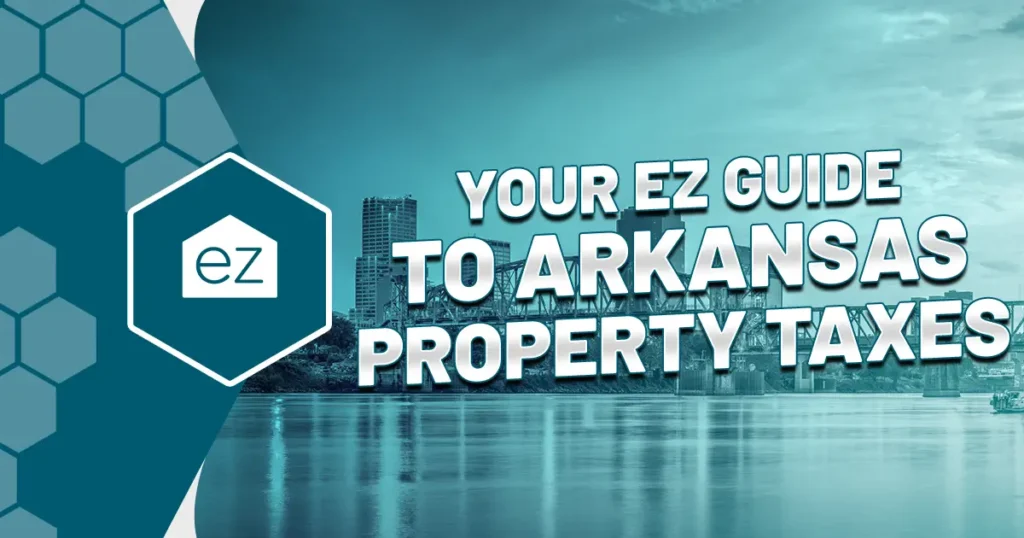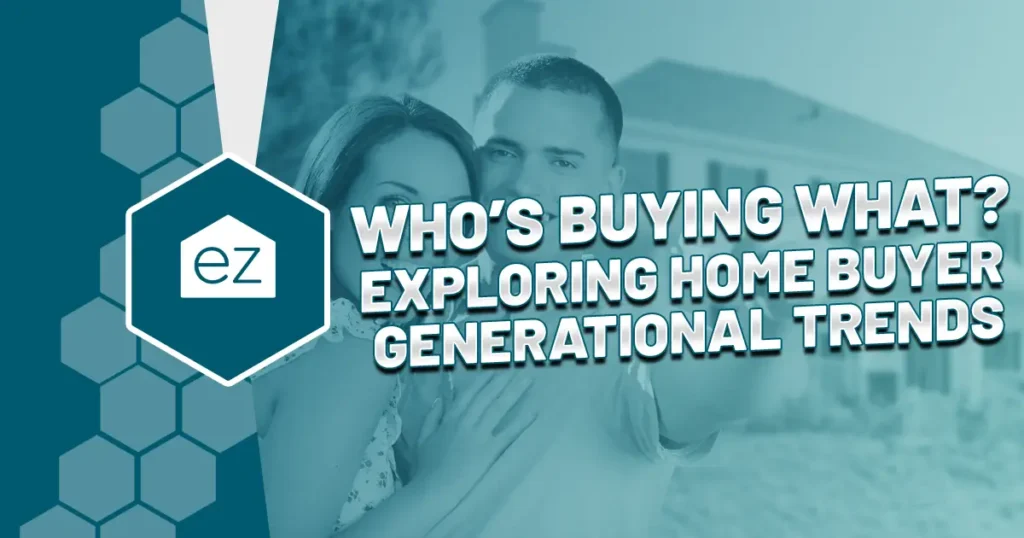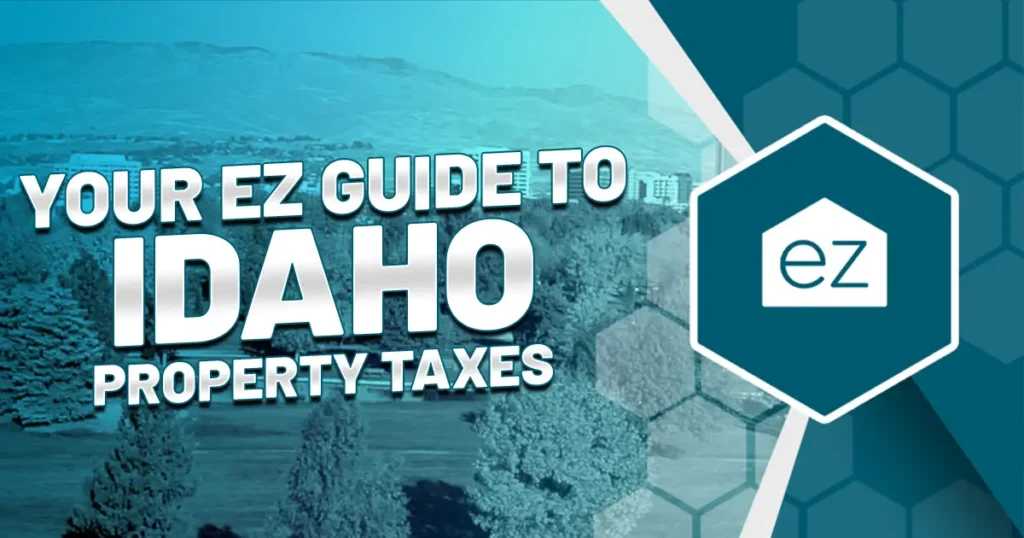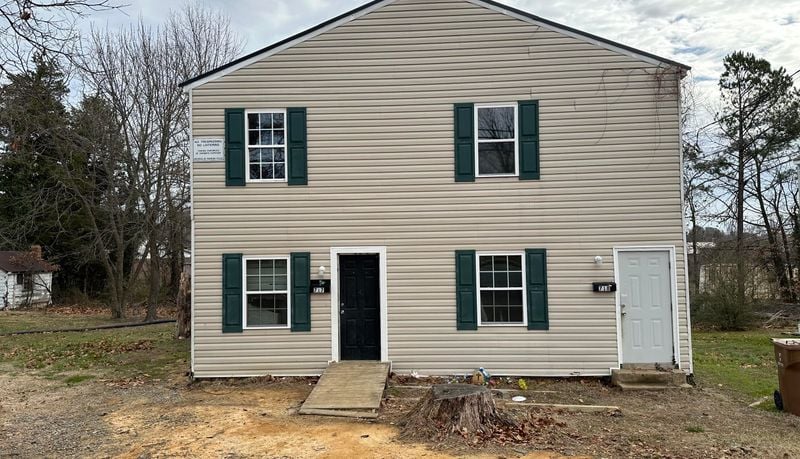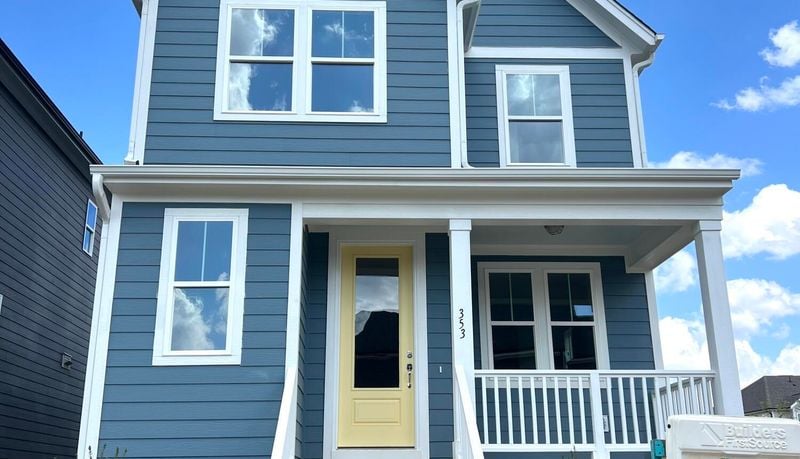Your Phoenix, AZ Real Estate Questions Answered
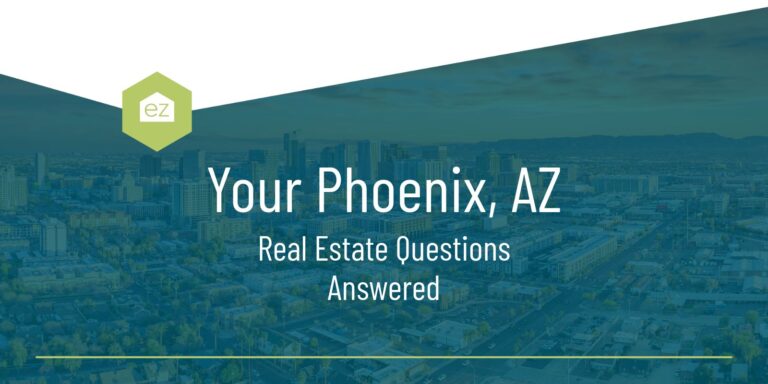
The nickname “Valley of the Sun” reflects Phoenix’s bountiful sunshine. Opportunity awaits those who venture into this sun-soaked Arizona capital. Today a sprawling metropolis of over one million people, the greater Phoenix metro attracts people with its desert beauty, rich cultural tapestry of entertainment, flourishing job market, and endless days of outdoor recreation.
Narrowing down where to buy can be a challenge in a city this massive. Our Phoenix real estate market overview introduces you to the Valley and what you need to know to buy a home here.
About Phoenix, AZ
Phoenix is Arizona’s largest city and its capital. Situated in the south-central part of the state, centuries of indigenous tribes once roamed the lands around Phoenix and the Sonoran Desert. Their presence is still felt in the many reservations around the state and at the unique Heard Museum, a must-see attraction.
It’s a desert city, founded on the Salt River banks, but receiving just eight inches of rain a year and rarely any snowfall. Phoenix has flourished as a retirement destination partly because of its warm, dry weather.
It was incorporated as a city in 1881, growing slowly until air conditioning in the 1950s and 1960s made desert summers more tolerable. Modern Phoenix is a bustling metropolis and cultural hub with many lifestyle attractions, including art galleries, museums, natural parks, and extensive outdoor recreation areas. Around 20 million people visited the city in 2022, drawn to its multiple Five-Star and Four-Star resorts, beautiful desert surroundings, and mild winters.
Besides the resorts and outdoor activities, Phoenix’s economy is diverse and robust, ranking fifth in the nation for 2023. Find work in leading sectors like technology, healthcare, finance, and manufacturing. It has eight Fortune 500 company headquarters in the metro, including Taylor Morrison Homes, Carvana, and ON Semiconductor.
What county is Phoenix, AZ in?
Maricopa County lies at the heart of the Valley of The Sun metropolitan area, which contains more than 4.5 million people (more than half the state’s population) and covers an area of around 9,224 square miles. It’s one of the largest individual counties in the nation by land mass, even larger than Delaware!
The county sprawls from the Sonoran Desert to the White Mountains to the northwest. It includes some of the most iconic locales in the Southwest, such as Prescott, Sedona, and Flagstaff. Several Native American communities are based here, with around 5% of the land designated tribal lands.
Maricopa County has over 20 municipalities, including Phoenix, and suburban cities like Scottsdale, Mesa, Glendale, Peoria, and Tempe – all part of the greater Phoenix metro. While highly urbanized, it also has one of the nation’s largest park systems, with 120,000 acres designated as open spaces or nature preserves.
The Phoenix, AZ, cost of living is rising
Living in Phoenix is in high demand, which pushes up the cost of living. While Phoenix is generally less expensive than other major US cities of a similar size, it’s still 8% more expensive than the national average and 2% more than the state average.
How much your budget will need depends on factors like housing and lifestyle choices. Housing costs have risen in recent years due to population growth and increased demand, resulting in prices 18% above the national average. Still, they are comparatively reasonable to some in-demand coastal cities.
Transportation costs are notably high, at 17% above average, but in good news for retirees, healthcare runs below average.
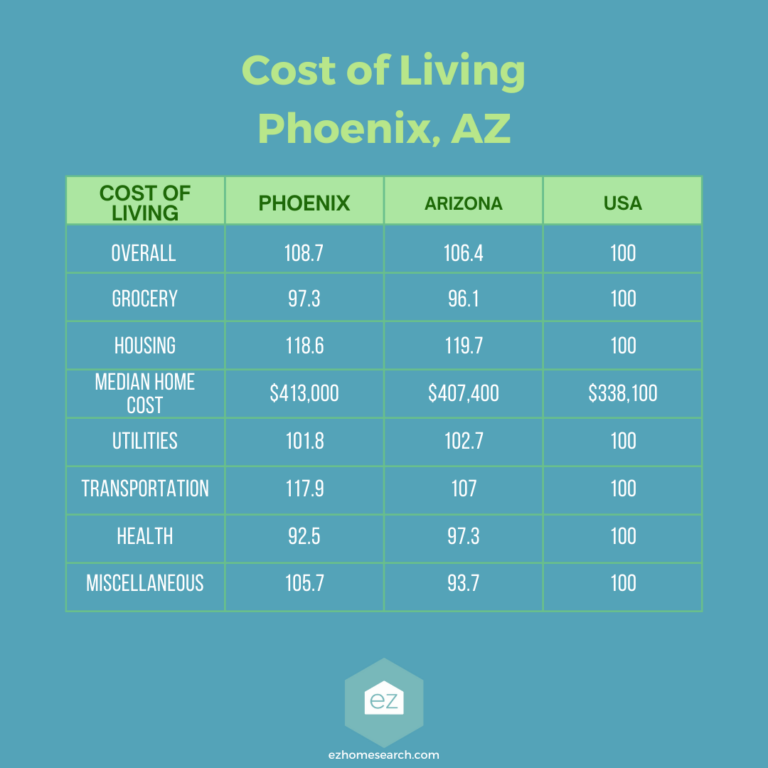
A single adult with no children would need about $32,835 each year after taxes to afford basic expenses in Phoenix. Meanwhile, a family of four with one working adult and two children would need $72,864.
Is Phoenix, AZ growing?
The Phoenix metro area is one the fastest-growing regions in the US. It’s estimated that it will add another one million people by 2030 with a population of around 5.5 million. Currently, Maricopa County is the nation’s fourth-largest county by population. The City of Phoenix had 1.64 million residents in the 2022 US Census estimate. As of 2022, its median resident age was 34.5 years old.
Factors driving this growth are its mild climate, a booming economy and jobs market, affordable housing, and year-round access to entertainment and recreation. The area’s population growth is expected to remain strong in the coming years as people flock from other regions in the US.
Phoenix real estate is hot
The Phoenix real estate market has exploded over the past few years, with median home prices up 14% from 2020 to 2021. Now that millennials are in their prime home-buying age, combined with the pull of former Californians and others relocating to Phoenix, the demand for housing has pushed market prices higher.
The median listing price for a home in Phoenix was $437,020 as of July 2023, a figure down just 0.68% year-over-year. Over 5,000 homes were listed on the market.
This is slightly more expensive than the state’s median list price of $434,500 at the same time but still much lower than other cities, such as Los Angeles, reporting a $1M median list price for that month.
And while activity is slowing and home prices seem to be stabilizing, PwC still listed Phoenix as a top 10 real estate market for 2023, primarily because of its strong economy.
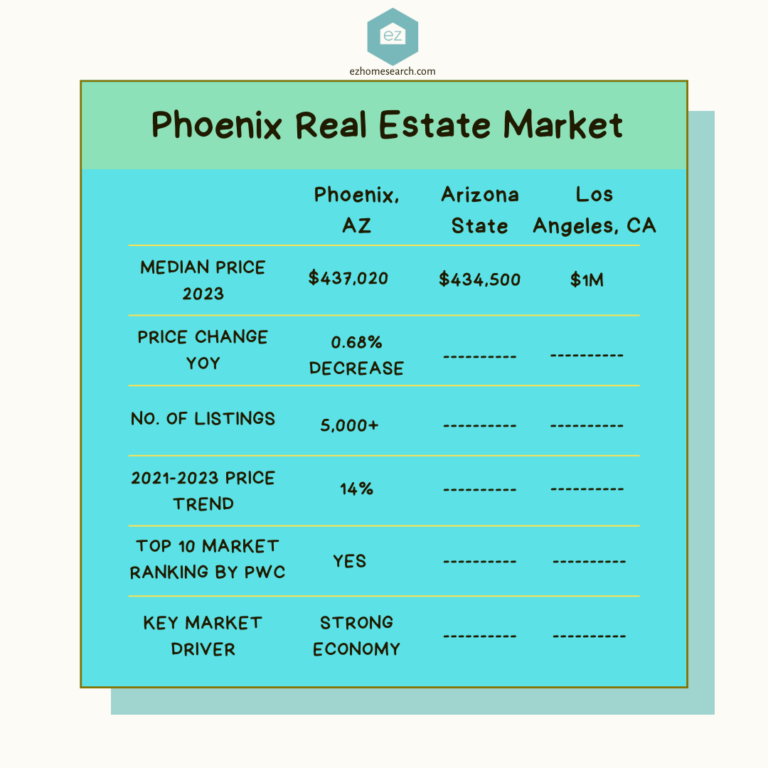
Finding condos or townhomes in Phoenix, AZ
Single-family homes dominate the Phoenix real estate market, but the increasing number of retirees and young professionals seeking low-maintenance living have buffered its condo and townhome market.
August 2023 had 569 listings in this category, with the price options ranging from $140,000 for a 924 sq ft condo to $3 million for a custom new construction townhome in a golf course community.
Some areas of town to look for condo or townhome living include, but are not limited to:
- Midtown
- Biltmore Area & Biltmore Gates
- Downtown
- Uptown
- Pointe Tapatio
- Phoenician
- The Promenade
Phoenix golf course communities
The “Valley of the Sun” carries a reputation as a premier golf destination, attracting recreational players and professionals to challenge their game. The desert’s natural beauty and warm climate make it an ideal place for playing the sport year-round. Golf course communities abound in the Phoenix metro. Having 160 golf clubs means residents gain easy access to some of the best golf courses in Arizona.
Popular neighborhoods with golf course living include:
- Ahwatukee Foothills
- Estrella
- Ironwood Village
- Tatum Ranch
- Vistancia
Even more golf course communities are available in the greater metro, particularly in Scottsdale and the northeast metro.
What is the property tax rate for Phoenix, AZ?
The property tax rate for Maricopa County was 1.2473 in 2022 with a secondary levy of .2097 mils. Phoenix charged 5.3460 million, not including the public school tax rate. There were other special tax districts for water, fire, and school.
What neighborhoods are in Phoenix, AZ?
The “best” neighborhood can vary depending on individual preferences, lifestyle, and priorities. With Phoenix’s size, the city divided itself into 12 “villages,” or larger districts, to better handle growth and management issues. For example, Camelback East, Paradise Valley, North Mountain, and South Mountain are four of the “villages.” Inside these are neighborhoods in Phoenix that are considered among the best:
Locals describe Arcadia as “lush” and “green,” an oxymoron for a desert town. Arcadia proper is next door to Scottsdale and developed from former orange and date orchards. The 1920s-1950s homes on larger lots belie its origins, but the styles here now vary with Pueblo and Mediterranean mixed in. This top neighborhood to live in Phoenix is among its more desirable, and the prices reflect that.
Its Arcadia Lite western neighbor is considered “hip,” with walkable streets close to Phoenix downtown and Echo Canyon and more affordable prices.
The Biltmore area includes an upscale Midwestern-styled neighborhood known for its luxurious homes tucked behind gated entrances. Residents are next door to the elegant shops at the Biltmore Fashion Park, the Arizona Biltmore Resort, and its renowned championship golf courses.
The Phoenix downtown has experienced revitalization in recent years and mixes up urban living, cultural attractions, and entertainment. It’s a hub for arts, sports, museums, and dining. Find warehouses now housing craft breweries and art spaces. Supporting it all is a cluster of sub-neighborhoods like Garfield, Coronado, and Grand. Inside these, your housing options range from rentable loft-style apartments to historic cottage homes to midcentury ranches.
Marlen Grove in North Central Phoenix captures the essence of hipster culture, where being weird is celebrated. This trendy neighborhood of homes designed by midcentury architect Haver attracts young professionals and artistic individuals. With its stylish, flexible designs and charming streets, once home to citrus groves, it’s an in-demand neighborhood.
Seven miles north is Sunnyslope, a neighborhood in the North Mountains foothills. Its white-painted “S” on the hill can be seen for miles on a good day. Inside the community are charming midcentury-era homes. Part of the 70-mile Arizona Canal Path cuts through Sunnyslope, and the middle-class area is packed with small businesses, parks, a pool, and schools.
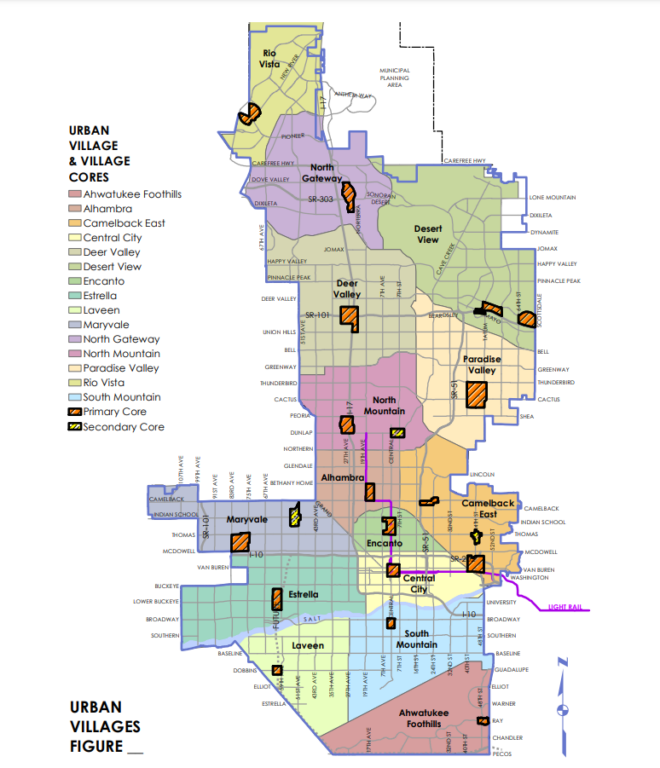
What areas are near Phoenix, AZ?
The Greater Phoenix area covers a large swath of land and is packed with the state’s best places to live. These unique communities have plenty to do and explore on their own merits and add to the advantages of living in Phoenix.
Mesa is on the east side of town, known for its three lakes, outdoor recreation access, sports culture, and great restaurants. Tempe is nearby, too, with an eclectic college town vibe thanks to Arizona State University.
Heading west, you’ll find Glendale and Peoria for a different urban experience, including the NFL Stadium, Sahauro Ranch Park, and wild peacocks.
For a more rural feel, head to the north to explore the water and mining attractions at Anthem and Cave Creek, or take a drive out to the well-named Carefree to cut loose in the stunning Arizona landscapes.
Neat and organized Sun City is a popular retirement destination in Arizona, located west of Phoenix. The “original fun city” is designed for active adults looking to enjoy their golden years with endless social and recreational activities.
Finally, Scottsdale is just east of Phoenix. People know it for its luxury resorts, upscale shopping, outdoor activities, and nightlife. It’s a top tourist destination in the West.
What to know about living in Phoenix, AZ
The climate makes it the perfect region for avid golfers and recreationalists who love to take advantage of the sunny weather to be outside. It’s close to some of the Southwest’s most beautiful natural attractions, like Sedona and the Grand Canyon.
But that climate also means being prepared for months with temperatures over 100F, sudden torrential rains, and sandstorms. Phoenix homes, especially newer ones, are working towards greater energy efficiency.
Phoenix is great to buy a home if you’re looking for a city that lets you be active year-round, live abundantly, and meet the needs of everyone in your family. The city is growing quickly, and demand for Phoenix real estate continues. But given the metro’s size and long list of advantages, you can find something that fits you here. No wonder it’s one of the best places in the country to call home.
Start Your Home Search
Preston Guyton
Share this Post
Related Articles
Real Estate Information
Your EZ Guide to Arkansas Property Taxes
Real Estate Information
The Role of a Buyer’s Agent in Real Estate Transactions
Real Estate Information
Who’s Buying What? Exploring Home Buyer Generational Trends
Real Estate Information
